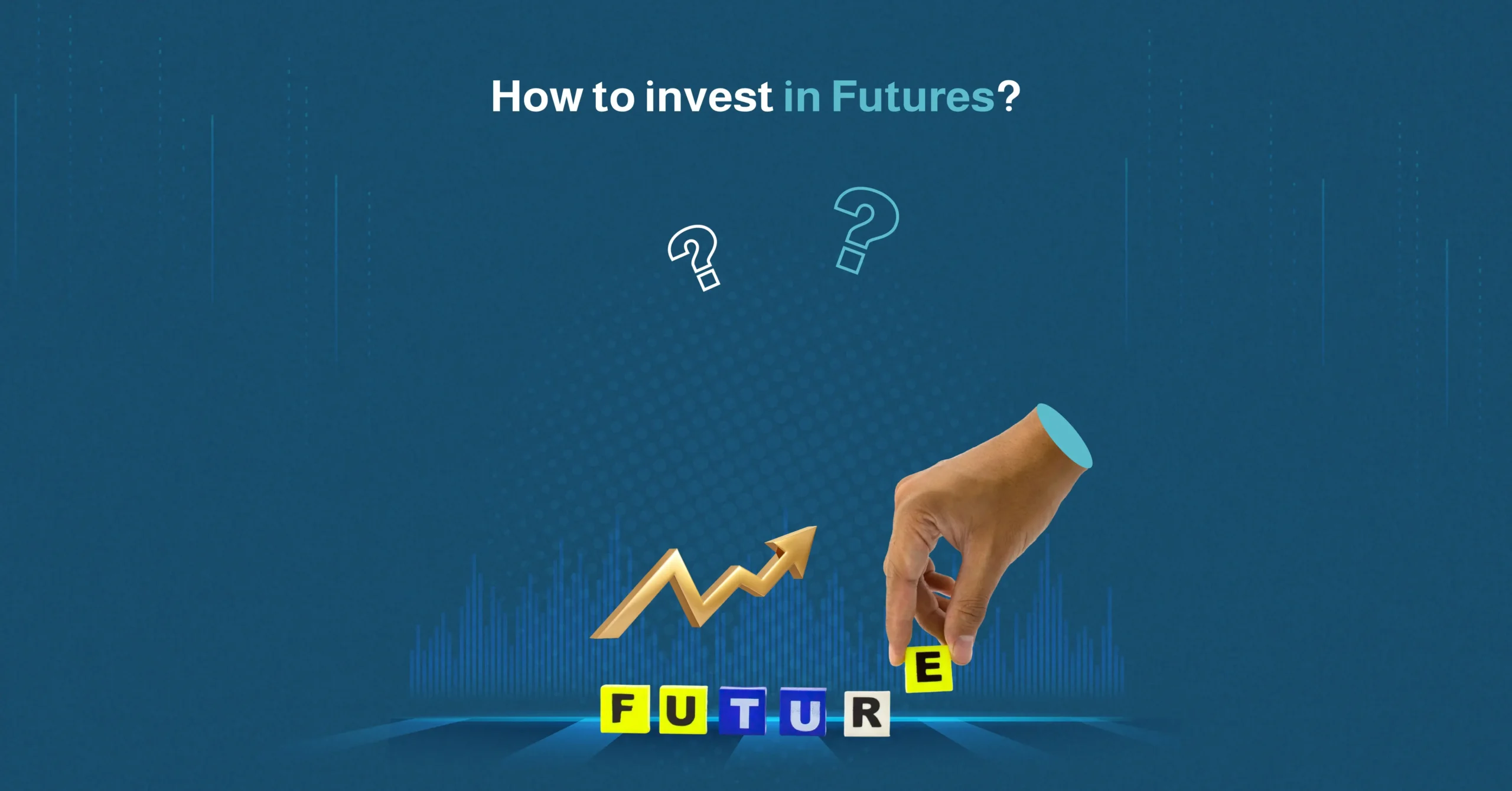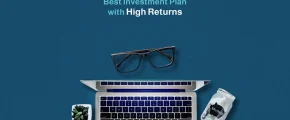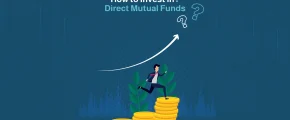When looking for a smart way to grow your wealth, investing is often at the forefront of our minds. If you are a beginner, this can feel a little daunting. Most investors typically start with stocks, mutual funds, or savings accounts, but there are better options for both diversification and potentially higher returns; one such option is futures.
Futures are contracts that allow you to buy and sell assets like commodities, stock indices, or currencies at a predetermined price on a set date. While this may sound overly complicated, having an understanding of futures can open the door to new methods of protection for your investments while even possibly profiting from market movements. A company might use futures to lock in prices for essential goods, while individual investors could use them for diversification beyond traditional stocks.
We aim to answer the question “How to invest in futures” in this article in a manner that makes the process clear and simple. We will cover what futures are, why they are chosen by investors, a side-by-side guide to get you started, the risks you need to be aware of, and how to balance futures trading with more stable investment options like Gamma Assets. Hopeful that by the end of reading this article, you will feel more confident and have a practical understanding of futures and a roadmap to approach them with confidence and caution.
What Are Futures and How Do They Work?
Futures are financial contracts that require buyers to purchase or sellers to sell an asset at a set price on a specific date in the future. Unlike buying stocks, you are agreeing to the price now but exchanging assets at a set date in the future.
These contracts are fairly straightforward and standardized; they specify quantity, quality, and delivery date, making them easy to trade on regulated exchanges. Assets that can be included in futures include gold, oil, wheat, stock indices, or currencies.
The key feature of futures is leverage. This would mean you only need a fraction of the contract’s value, called a margin, to control a large position. There is a catch-22 with leverage, as it can amplify profits, but it can also increase potential losses. This means that beginners need to be careful.
Futures are usually used for two purposes:
- Hedging: Companies reduce risk, for example, airlines buy oil futures to lock in fuel costs.
- Speculation: Traders aim to profit from price changes in commodities, indices, or currencies.
Most futures contracts are cash-settled, which means that the price difference is exchanged without delivering the asset. So, futures let the investors plan for the future, whether that be for managing risks or seeking profits. By learning the basics, you are completing the first steps towards understanding how to invest in futures effectively.
Why Investors Choose Futures Contracts
There are several reasons why investors may use futures: managing risks, seeking potential profits, and diversifying their portfolios. With an understanding of futures, new investors can see how futures fit into a broader investment strategy.
-
Hedging Against Price Changes
Futures are commonly used to reduce financial risk. Imagine a farmer who might sell wheat futures to secure a guaranteed price on his harvest, protecting against a potential drop in market value. An airline might buy oil futures to lock in fuel costs. Both of these scenarios, futures provide a way to plan ahead and reduce uncertainty rather than just chasing profits.
-
Speculating for Profit
Traders use futures to speculate on price movements. An investor may speculate that gold prices are due to rise, so they might buy a gold futures contract and sell it later at a higher price. There is the potential for significant rewards, but leverage can also magnify losses, making it crucial to trade with caution.
-
Portfolio Diversification
Futures offer investors exposure to commodities, indices, and currencies that often behave differently from stocks and bonds. Adding futures to your portfolio would help spread risk and smooth returns over time, providing balance alongside traditional investments.
By viewing futures as a tool for hedging, speculation, and diversity, investors can better understand their place in a carefully planned investment approach. Learning how to invest in futures means seeing the opportunities and the responsibilities they carry.
Step-by-Step Guide on How to Invest in Futures
While starting with futures may seem a bit overwhelming, we have broken the process down into more manageable steps. Here is your beginner-friendly guide to learning how to invest in futures safely.
| Step | Action | Key Tips | Example |
| 1 | Educate yourself | Learn contract types, leverage, and markets | Use guides, tutorials, or demo accounts |
| 2 | Choose a platform | Pick a regulated, beginner-friendly broker | Ensure it offers commodities, indices, or currency features |
| 3 | Open an Account | Complete KYC and fund your account | Start small to limit risk |
| 4 | Start Trading | Begin with small contracts or paper trading | Try mini gold or oil contracts |
| 5 | Monitor & Adjust | Track positions and review strategy | Set stop-losses to avoid over-leveraging. |
Step 1: Educate yourself. Understand how futures contracts work, margin requirements, and leverage. Many brokers offer tutorials or demo accounts, allowing you to practice with no real-world consequences or risking your own capital.
Step 2: Choose a platform. As a beginner, we recommend selecting a beginner-friendly brokerage with access to markets you are interested in. Make sure you check fees, customer support, and educational resources available.
Step 3: Open an account and fund it. This involves completing your registration and KYC requirements. Ideally, you should start with a small deposit to limit exposure as you learn.
Step 4: Start trading. We recommend beginning with small contracts or paper trading. Focusing on a few markets at first, like gold, oil, or major stock indices.
Step 5: Monitor and adjust. Make sure to keep an eye on your positions. Make use of stop-loss orders and review your strategy regularly. Learning how to invest in futures takes a little time, so start small and grow as your confidence increases.
Risks to Watch Out for When Trading Futures
While futures can offer significant opportunities, these come with risks, which every beginner should be aware of. Having an understanding of the risks is crucial for anyone learning how to invest in futures.
- High volatility
Movement in futures can be dramatic; market swings, even small ones, can cause large shifts resulting in large gains or losses because of leverage.
- Leverage and Margin Risks
The margin means you can control a large position with a smaller initial deposit. This might amplify potential profits, but it would also magnify losses. If the market moves against you, you could face a margin call, requiring additional funds to maintain your position.
- Market and Liquidity Risks
Some contracts may have low trading volumes, which would make it difficult to enter or exit positions without the price being affected. To help reduce the risk, it is worth choosing widely traded futures.
- Emotional and Psychological Challenges
It is all too easy to make impulsive or stress decisions when the market shifts rapidly. Overtrading or chasing losses can quickly wipe out gains.
- Complexity
Trading in futures requires an understanding of the contract specifications, settlement methods, and expiration dates. Misunderstanding these details can result in unintended losses.
Managing the risks:
- You can make use of stop orders to limit losses
- Start with small contracts or paper trading.
- Diversify across different assets and strategies
- Keep learning and reviewing positions regularly.
Understanding these risks can help beginners approach futures with clarity and thoughtfulness. When combining careful strategy with continued education, you can see how to invest in futures responsibly while minimizing potential hazards.
Balancing Futures With More Stable Options Like Gamma Assets
Oil futures are known for their rapid price swings, which can create both opportunities and risks for the trader. They might appeal to short-term investors seeking rapid gains, but their volatility makes them less predictable as a long-term strategy. Investors who are looking to diversify can use Gamma Assets as a long-term strategy to stabilize their portfolio. By focusing on real estate-backed investments, Gamma Assets offers exposure to an asset class that is less sensitive to the daily fluctuations affecting oil futures. This balance can help reduce the impact of market stocks, allowing investors to benefit from both growth potential and greater stability.
Futures are contracts that allow investors to lock in the price of a commodity, index, or financial instrument for delivery at a future date. Futures are widely used for speculation, hedging, and portfolio diversification. Futures may offer substantial returns, but they are also capable of substantial losses, making education and careful planning vital.
Getting started with futures means choosing a reputable broker, understanding msrgib requirements, and practicing on a demo account before committing real capital. Stop-loss orders, positioning sizing, and diversification are all used by successful futures investors. For many investors, balancing high-risk opportunities such as futures with more stable options, such as fractional real estate through a platform like Gamma assets. Gamma assets allow you to invest in real estate from just 500 SAR, providing a fantastic counterbalance to the volatility of futures.
If you are new to futures, start small, invest time in learning, and build a portfolio that blends both growth and stability. This combination can help you gain returns without exposing your whole investment to the sharp swings of the futures market.
FAQ :
-
Is investing in futures a good idea for beginners?
Futures offer potential gains but are also high risk. Beginners should start small, practice with demo accounts, and focus on education before committing significant funds.
-
How much money do I need to start investing in futures?
Margin requirements vary by contract and broker. Many platforms allow starting with small deposits, but it’s important to only use funds you can afford to risk and potentially lose.
-
What are the main differences between futures and options?
Futures obligate a trade at a set price, while options give the right but not the obligation. Futures carry higher risk, while options allow more flexibility.
-
Are futures suitable for Islamic investors?
Traditional futures are generally not Sharia-compliant due to interest and speculation. Islamic investors may consider asset-backed or compliant alternatives, such as real estate investments through platforms such as Gamma Assets.













